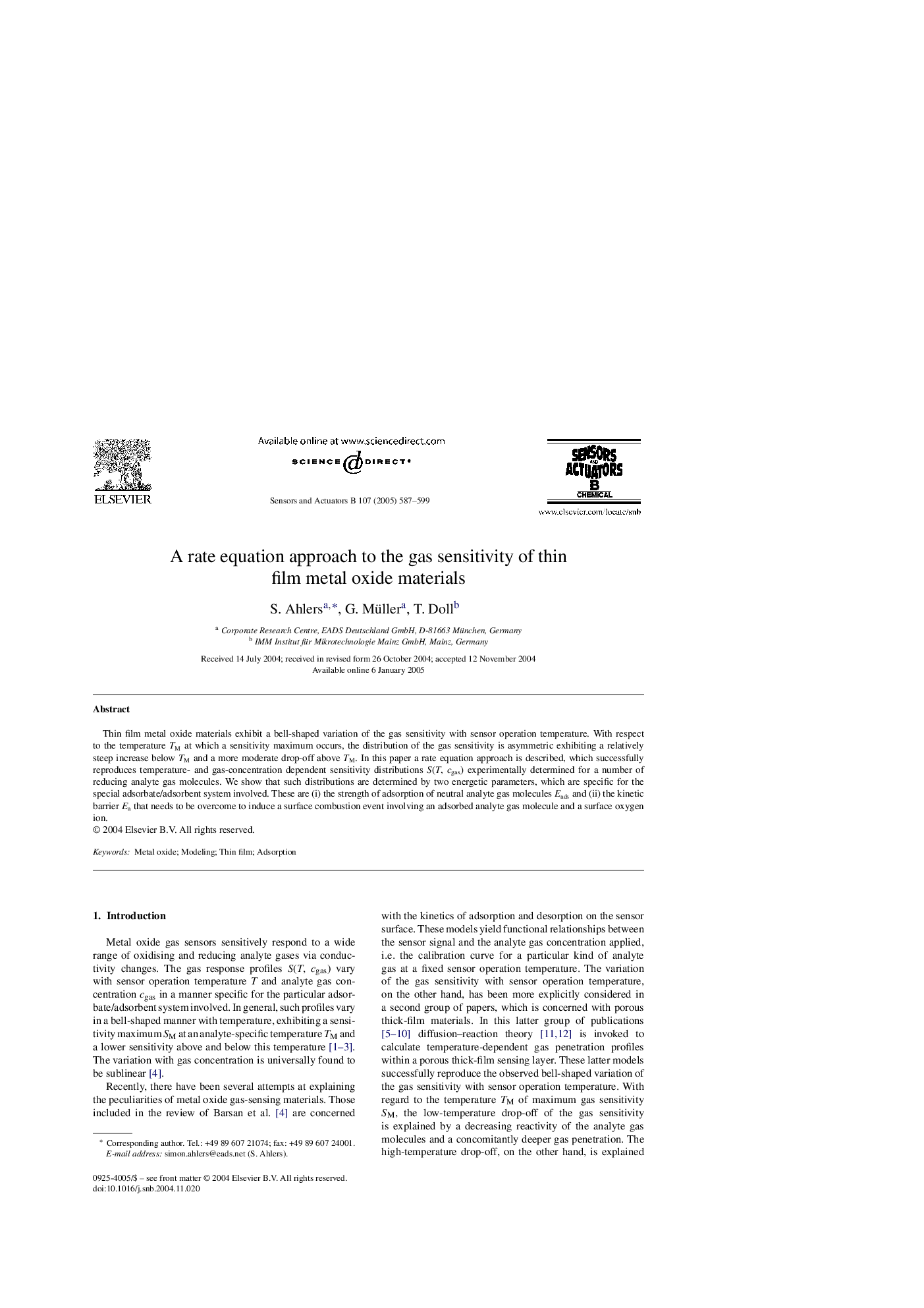| Article ID | Journal | Published Year | Pages | File Type |
|---|---|---|---|---|
| 10410895 | Sensors and Actuators B: Chemical | 2005 | 13 Pages |
Abstract
Thin film metal oxide materials exhibit a bell-shaped variation of the gas sensitivity with sensor operation temperature. With respect to the temperature TM at which a sensitivity maximum occurs, the distribution of the gas sensitivity is asymmetric exhibiting a relatively steep increase below TM and a more moderate drop-off above TM. In this paper a rate equation approach is described, which successfully reproduces temperature- and gas-concentration dependent sensitivity distributions S(T, cgas) experimentally determined for a number of reducing analyte gas molecules. We show that such distributions are determined by two energetic parameters, which are specific for the special adsorbate/adsorbent system involved. These are (i) the strength of adsorption of neutral analyte gas molecules Eads and (ii) the kinetic barrier Ea that needs to be overcome to induce a surface combustion event involving an adsorbed analyte gas molecule and a surface oxygen ion.
Related Topics
Physical Sciences and Engineering
Chemistry
Analytical Chemistry
Authors
S. Ahlers, G. Müller, T. Doll,
